Bb4.4
The date October 15 (288 = 2 * 144) was essential, for this was
when Hotu A Matua had arrived
to Easter Island:
|
OCT 1 (91 + 183): |
*25 |
SEPT 6 (66 +
183): |
*192 |
Nov 18
(322): |
6 |
Nov 25 (329): |
|
APRIL 1 (91) |
MARCH 5 (66) |
322 - 41 -
80 = *201 = "Oct 8 (281) |
329 - 41 - 80 = *208 = "Oct 15
(288) |
|
June 4 (91 + 64 =
155) |
May 12 (130 = 66 +
64) |
|
 |
 |
 |
 |
|
Ba1-1 |
Bb3-25 (414
+ 111) |
Bb3-34 (112 +
421) |
Bb3-41 (175 + 365) |
|
HAEDUS II (*75) |
ALGENIB PERSEI
(*50) |
ρ Cor. Borealis
(*242.4) |
ANTARES (*249) |
|
"April 24 (114 =
91 + 23) |
"March 30 (89 =
66 + 23) |
"Oct 8 (281
= 322 - 41) |
"Oct 15 (288 =
329 - 41) |
|
23 = 64 - 41 |
41 = 64 - 23 |
... 288 was also the day number
the Pope Gregory XIII had decided on for launching
his new calendar: ... The Julian calendar day
Thursday, 4 October 1582 was followed by the first
day of the Gregorian calendar, Friday, 15 October
1582 (the cycle of weekdays was not affected)
...
We should now fill in the nakshatra stars from the beginning of
line Bb4, from the beginning of the Lono
cycle, keeping in mind that Easter Island is located far down in
the south and not up in the north as the Hawaii islands:
... Antares is visible in the sky all night around May 31 of
each year, when the star is at opposition to the Sun. At
this time, Antares rises at dusk and sets at dawn. For
approximately two to three weeks on either side of November
30, Antares is not visible in the night sky, because it is
near conjunction with the Sun; this period of invisibility
is longer in the Northern Hemisphere than in the Southern
Hemisphere, since the star's declination is significantly
south of the celestial equator ...
|
...
This was at the first glyph in line Bb4, at the distance
3 times 181 days counted from Ba1-1, suggesting not only
a correspondence to the day of Antares as counted from
the day of Aldebaran but also a correspondence to the
day of Sirius (June
30, *101, 181) in the Gregorian
calendar ... |
|
 |
|
Bb4-1 (122,
543 = 3 * 181) |
|
Kua huki - ko te maro |
|
Nov 28 (332
= 322 + 10) |
|
ζ
Herculis,
η
Tr. Austr.
(252.1), η Herculis, β Apodis (252.5) |
|
May 29 (149
= 332 - 183) |
|
No
star listed (69) |
Turou.
Mgv.: a great sacriledge or blasphemy. Ta.: turou, a
curse, to blaspheme. Churchill.
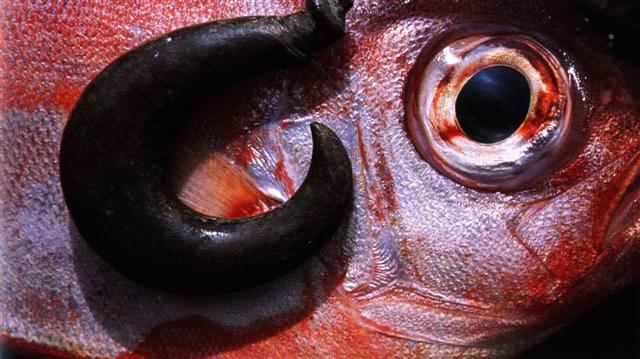 |
... Presented the drink to quaff, he refused
it, saying that he was ill; but urged to taste it from the tip
of his finger, he did so and was immediately overpowered by its
magic. He lifted the bowl and was drunk. He sent for
Quetzalpetlatl, his sister, who dwelt on
the Mountain Nonoalco. She
came, and her brother gave her the bowl, so that she too was
drunk. And with all reason forgotten, the two that night neither
said prayers nor went to the bath, but sank asleep together on
the floor. And in the morning
Quetzalcoatl said, in shame, 'I have
sinned; the stain of my name cannot be erased. I am not fit to
rule this people. Let them build a habitation for me deep under
the ground; let them bury my bright treasures in the earth; let
them throw the glowing gold and shining stones into the Precious
Waters where I take my nightly bath. And all this was done. The
king remained four days in his underground tomb, and when he
came forth he wept and told his people that the time had come
for his departure to the Red Land, the Dark Land, the Land of
Fire ...
... Rerehu, Burning; a Maori name for
Antares related to Rehua. Rerehu presided over the
sixth month November-December in Stowell's enumeration, while
Tregear associated Rerehu with the ninth month,
February-March. Rehu is found in the Hawaiian star and
month name Welehu, the Tuamotuan Herehu, and in
the Rehu, Varehu, and Avarahu of the
Society Islands ...
Herehu is a Tuamotuan star whose name
suggests the Maori Rerehu and Rehua and the
Marquesan Ehua, all names for Antares. The Hawaiian
equivalent lehu is found in the star name Lehuakona,
Lehua-of-the-south. Rehu is seen in such month names a
Serehu of Tongareva, Welehu of Hawaii, and Rehu
and Varehu of the Society Islands ... Waerehu is
listed as a Maori star and was a name for Antares among the
Moriori as well as for the month of January ...

As I perceive the glyph sequence leading up to
number 22 (two
and twenty) we could
subdivide it into 8 + 4 + 5 + 5:
|
Nov 29 (333) |
30 |
Dec 1 (365 + 335) |
2 (24 * 14 = 336) |
|
 |
 |
 |
 |
|
Bb4-2 (123, 544) |
Bb4-3
→ 120 |
Bb4-4 |
Bb4-5
→ 200 |
|
No star listed (70) |
TABIT =
π³
Orionis
(71.7),
π²
Orionis (71.9) |
π4
Orionis (72.1),
ο¹
Orionis (72.4),
π5
Orionis (72.8)
*31.0 = *72.4 - *41.4 |
π¹
Orionis (73.0),
ο²
Orionis (73.4),
HASSALEH =
ι
Aurigae
(73.6),
π6
Orionis (73.9)
*32.0 = *73.4 - *41.4 |
|
Dec 3 |
4 |
5 |
6 (340) |
|
 |
 |
 |
 |
|
Bb4-6
→ 240 |
Bb4-7 (128, 549) |
Bb4-8 → 320 |
Bb4-9
→ 360 |
|
ALMAAZ (The Male Goat) =
ε
Aurigae
(74.7),
HAEDUS I =
ζ
Aurigae
(74.8) |
HAEDUS II = η Aurigae
(75.9) |
5h (*76.1)
ε
Leporis (76.0),
CURSA (Footstool) =
β
Eridani (76.4),
λ
Eridani (76.7)
*35.0 = *76.4 - *41.4 |
μ Aurigae, μ Leporis
(77.6) |
With aid from the nakshatra stars it becomes evident that
Bb4-9 ought to correspond to the gap between the last star of
Eridanus river (Cursa) and the beginning of the Orion
constellation at Rigel:
... In view of the almost universal
prevalence of the Pleiades year throughout the Polynesian
area it is surprising to find that in the South Island and
certain parts of the North Island of New Zealand and in the
neighboring Chatham Islands, the year began with the new
Moon after the yearly morning rising, not of the Pleiades,
but of the star Rigel [*78] in Orion ...

|
Egyptian
water ripples |
 |
Phoenician
mēm |
 |
Greek
mu |
Μ (μ) |
... Behind me, towering
almost 100 feet into the
air, was a perfect
ziggurat, the Temple
of
Kukulkan.
Its four stairways had
91 steps each. Taken
together with the top
platform, which counted
as a further step, the
total was 365. This gave
the number of complete
days in a solar year. In
addition, the geometric
design and orientation
of the ancient structure
had been calibrated with
Swiss-watch precision to
achieve an objective as
dramatic as it was
esoteric: on the spring
and autumn equinoxes,
regular as clockwork,
triangular patterns of
light and shadow
combined to create the
illusion of a giant
serpent undulating on
the northern staircase
...
|
... The
Mesopotamian cylinder seal shows in the upper part the 'God
Boat' and in the lower part people are building a
ziggurat, the proposition being that
the boat is bringing the me from Eridu-Canopus, the
measures of creation ...
.jpg)
... It is certainly
true that the exterior form of the hare paenga, when
the superstructure and thatch are intact, resembles an
overturned boat, with
the form established by the foundation ...
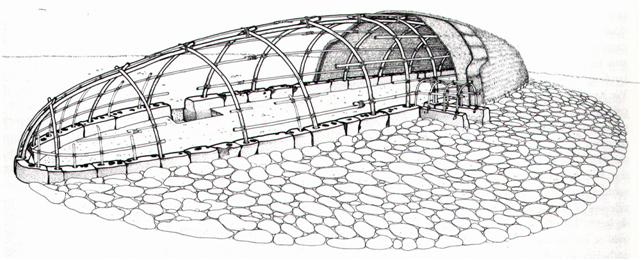
|
Dec 7 |
8 (342 → 132 + 210) |
9 (343 = 7 * 7 * 7) |
10 (*264) |
|
 |
 |
 |
 |
|
Bb4-10 |
Bb4-11 (132) |
Bb4-12 (554) |
Bb4-13 → 14 * 29½ |
|
ĸ Leporis (78.0),
RIGEL (Foot) =
β
Orionis
(78.1),
Flaming Star = IC405
(78.2),
CAPELLA =
α
Aurigae (78.4),
ο
Columbae,
τ
Orionis (78.8)
*37.0 = *78.4 - *41.4
THUBAN (α Draconis) |
λ Aurigae (79.0), λ Leporis (79.6), ρ Aurigae (79.7)
ARCTURUS (α Bootis) |
Shur-narkabti-sha-iltanu-5
(Star in the Bull towards the north)
σ
Aurigae (80.4), BELLATRIX (Female Warrior) =
γ
Orionis, SAIF AL JABBAR (Sword of the Giant) =
η
Orionis
(80.7),
ELNATH (The Butting One) =
β
Tauri =
γ
Aurigae
(80.9)
*39.0 = *80.4 - *41.4 |
ψ
Orionis (81.1),
NIHAL (Thirst-slaking Camels) =
β
Leporis
(81.7) |
|
... Let them
build a habitation for me deep under the ground; let
them bury my bright treasures in the earth; let them
throw the glowing gold and shining stones into the
Precious Waters where I take my nightly bath. And
all this was done. The king remained four days in
his underground tomb, and when he came forth he wept
and told his people that the time had come for his
departure to the Red Land, the Dark Land, the Land
of Fire ...
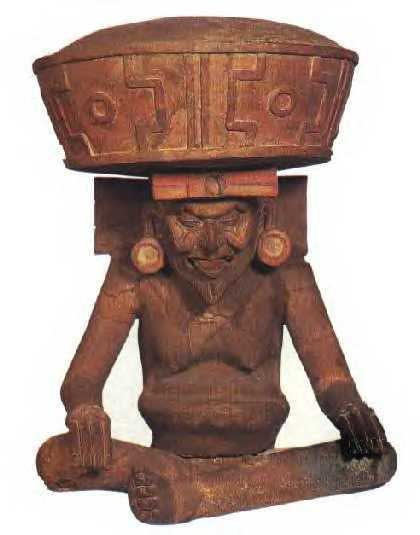 |
One of the most well known asterisms, viz the stars
('stones') forming the Belt of Orion
(Tau-toru), was visible close to the Full Moon in
December 11:

|
Dec 11
(345) |
12 (*266) |
Lucia |
14 |
15 |
|
 |
 |
 |
 |
 |
|
Bb4-14 |
Bb4-15 (136) |
Bb4-16 |
Bb4-17 |
Bb4-18
(560) |
|
KHUFU
MINTAKA (Belt) = δ
Orionis, υ Orionis (82.4),
χ Aurigae (82.5), ε Columbae (82.6)
*41.0 =
*82.4 - *41.4
→ 41 Arietis (Bharani) |
KHAFRE
Al Hak'ah-3 (Brand) /
Mrigashīrsha-5 (Stag's Head)
/
Turtle Head-20 (Monkey)
/
Mas-tab-ba-tur-tur (Little
Twins)
ARNEB =
α
Leporis, CRAB NEBULA = M1 Tauri
(83.0,
φ¹
Orionis (83.1),
HEKA =
λ
Orionis,
ORION NEBULA = M42
(83.2),
φ²
Orionis (83.6),
ALNILAM
(String of Pearls) =
ε
Orionis
(83.7) |
MENKAURE
Three Stars-21 (Gibbon)
/
Shur-narkabti-sha-shūtū-6
(Star in the Bull towards the south) /
ANA-IVA-9 (Pillar of exit)
HEAVENLY GATE =
ζ
Tauri,
ν
Columbae (84.0),
ω
Orionis (84.2),
ALNITAK (Girdle) =
ζ
Orionis,
PHAKT (Phaet) =
α
Columbae
(84.7) |
ο Aurigae (85.8), γ Leporis (85.9)
YANG
MUN (α Lupi) |
μ Columbae (86.1), Saiph (86.5), ζ μ Columbae,
SAIPH (Sword) = κ Orionis
(86.5), τ Aurigae, ζ Leporis (86.6) |
|
... Menkaure was allegedly a much more benevolent
Pharaoh than his predecessors. According to legends
related by Herodotus, he wrote the following: This
Prince (Mycerinus) disapproved of the conduct of
his father, reopened the temples and allowed the people,
who were ground down to the lowest point of misery, to
return to their occupations and to resume the practice
of sacrifice. His justice in the decision of causes was
beyond that of all the former kings. The Egyptians
praise him in this respect more highly than any other
monarchs, declaring that he not only gave his judgements
with fairness, but also, when anyone was dissatisfied
with his sentence, made compensation to him out of his
own purse and thus pacified his anger. The Gods however
ordained that Egypt should suffer tyrannical rulers for
a hundred and fifty years according to this legend.
Herodotus goes on: An oracle reached him from the town
of Buto, which said 'six years only shalt thou
live upon this earth, and in the seventh thou shalt end
thy days'. Mycerinus, indignant, sent an angry
message to the oracle, reproaching the god with his
injustice - 'My father and uncle,' he said 'though they
shut up the temples, took no thought of the gods and
destroyed multitudes of men, nevertheless enjoyed a long
life; I, who am pious, am to die soon!' There came in
reply a second message from the oracle - 'for this very
reason is thy life brought so quickly to a close - thou
hast not done as it behoved thee. Egypt was fated to
suffer affliction one hundred and fifty years - the two
kings who preceded thee upon the throne understood this
- thou hast not understood it'. Mycerinus, when
this answer reached him, perceiving that his doom was
fixed, had lamps prepared, which he lighted every day at
eventime, and feasted and enjoyed himself unceasingly
both day and night, moving about in the marsh-country
and the woods, and visiting all the places he heard were
agreeable sojourns. His wish was to prove the oracle
false, by turning night into days and so living twelve
years in the space of six ...
.jpg) |
And the House of the Moist One (Bet-el-geuze) - at the brink of
the Milky Way River - may have inspired the idea of
Splashing Water (Hi'uwai):
... In the
deep night before the image [of Lono] is first seen,
there is a Makahiki ceremony called 'splashing-water'
(hi'uwai). Kepelino tells of sacred chiefs being
carried to the water where the people in their finery are
bathing; in the excitement created by the beauty of their
attire, 'one person was attracted to another, and the
result', says this convert to Catholicism, 'was by no means
good'. At dawn, when the people
emerged from their amorous sport, there standing on the
beach was the image of Lono ...
... The Mahabharata insists on
six as the number of the Pleiades as well as of the
mothers of Skanda and gives a very broad and wild
description of the birth and the installation of
Kartikeya 'by the assembled gods ... as their
generalissimo', which is shattering, somehow, driving home
how little one understands as yet. The least which can be
said, assuredly: Mars was 'installed' during a more or less
close conjunction of all planets; in Mbh. 9.45 (p. 133) it
is stressed that the powerful gods assembled 'all poured
water upon Skanda, even as the gods had poured water
on the head of Varuna, the lord of waters, for
investing him with dominion'. And this 'investiture' took
place at the beginning of the Krita Yuga, the Golden
Age ...
|
Dec
16 (350) |
17 |
18 |
19 |
20 (12 * 29½) |
|
 |
 |
 |
 |
 |
|
Bb4-19 (140) |
Bb4-20 (141) |
Bb4-21 |
Bb4-22 (564 = 3 * 188) |
Bb4-23 (12 * 12) |
|
υ Aurigae (87.1), ν Aurigae (87.2),
WEZN (Weight) = β Columbae,
δ Leporis (87.7),
TZE (Son) = λ Columbae
(87.9) |
Ardra-6 (The Moist One)
/
ANA-VARU-8 (Pillar to sit by)
χ¹
Orionis,
ξ
Aurigae (88.1),
BETELGEUZE =
α
Orionis
(88.3),
ξ
Columbae (88.5),
σ
Columbae (88.7)
ZUBEN ELGENUBI (α Librae) |
η
Leporis (89.0),
PRAJA-PĀTI (Lord of Created Beings) =
δ
Aurigae,
MENKALINAN (Shoulder of the Rein-holder) =
β
Aurigae, MAHASHIM (Wrist) =
θ
Aurigae,
and
γ
Columbae (89.3),
π
Aurigae (89.4),
η
Columbae (89.7)
*48.0 = *89.4 - *41.4 |
μ Orionis (90.3), χ² Orionis (90.5) |
6h (91.3)
ν
Orionis (91.4),
θ
Columbae (91.5),
π
Columbae (91.6)
*50.0 = *91.4 - *41.4
→ Splashing Water |
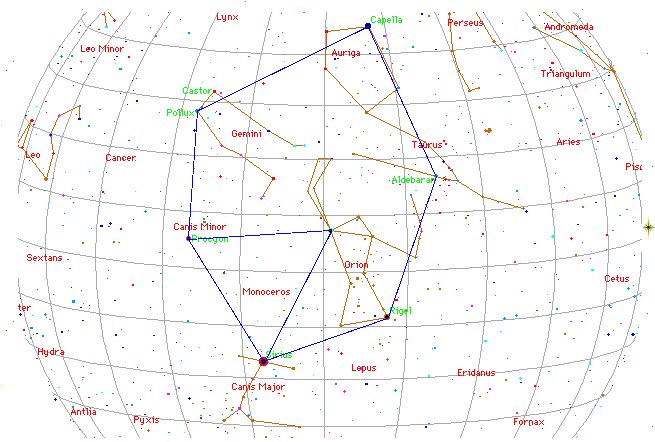 |
Lewis Carroll:
... I wan't a clean cup, interrupted the
Hatter: let's all move one place on. He moved as he spoke, and
the Dormouse followed him: the March Hare moved into the
Dormouse's place, and Alice rather unwillingly took the place of
the March Hare. The Hatter was the only one who got any
advantage from the change; and Alice was a good deal worse off
than before, as the March Hare
had just upset the milk-jug into his plate
...
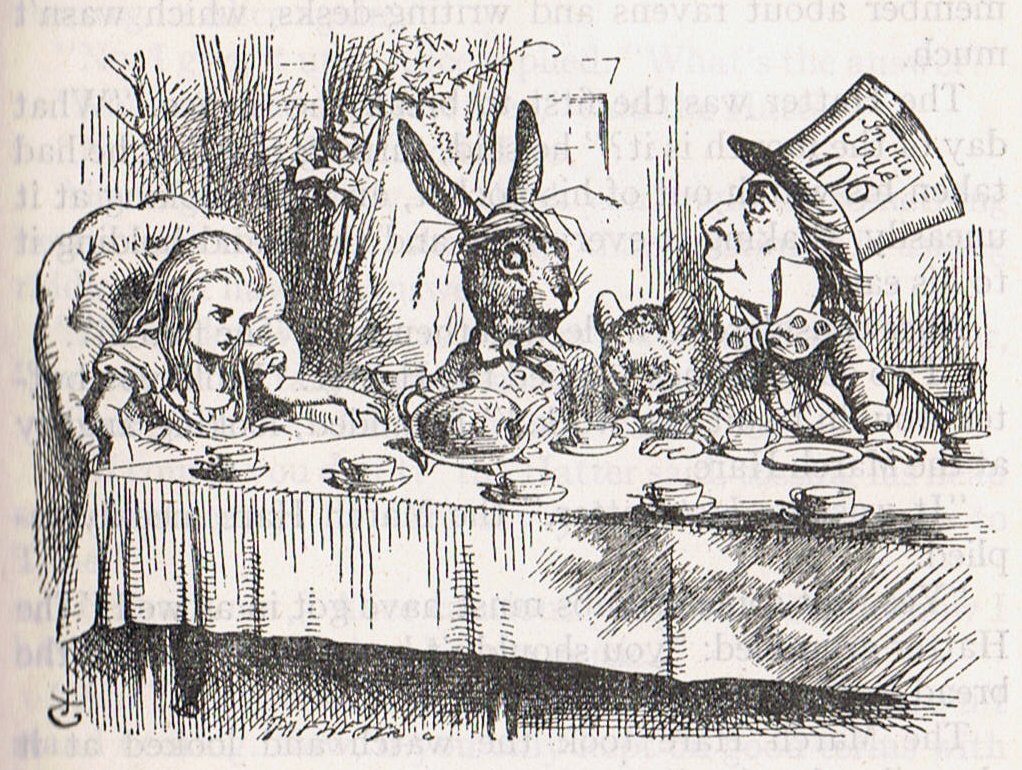
|













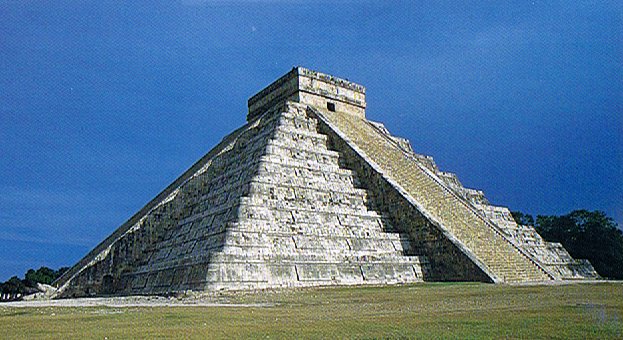
.jpg)






.jpg)




